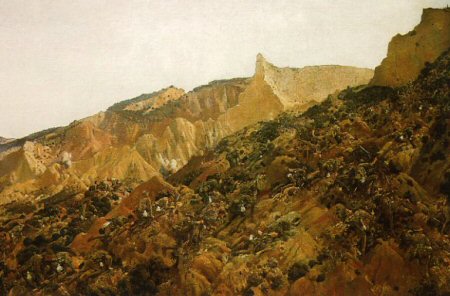In the Remembrance Month of November it is perhaps appropriate that we recall the poem, The Burial of Sir John Moore at Corunna, one of those hardy annuals drilled into generations of youth (including your editor, perhaps surprisingly considering the Irish Nationalist fervour of the CBS brothers!).
We have a special reason to choose this martial poem, as it was first published 200 years ago in the Newry Telegraph! The reason is that at the time the poet, Charles Wolfe worked as COI curate at
The Burial of Sir John Moore at Corunna
Not a drum was heard, not a funeral note,
As his corpse to the rampart we hurried;
Not a soldier discharged his farewell shot
O’er the grave where our hero we buried.
We buried him darkly at dead of night,
The sods with our bayonets turning,
By the struggling moonbeams’s misty light
And the lanthorn dimly burning.
No useless coffin enclosed his breast,
Not in sheet or in shroud we wound him;
But he lay like a warrior taking his rest
With his martial cloak around him.
Few and short were the prayers we said,
And we spoke not a word of sorrow;
But we steadfastly gazed on the face that was dead,
And we bitterly thought of the morrow.
We thought, as we hollowed his narrow bed
And smoothed down his lonely pillow,
That the foe and the stranger would tread o’er his head,
And we far away on the billow!
Lightly they’ll talk of the spirit that’s gone,
And o’er his cold ashes upbraid him –
But little he’ll reck, if they let him sleep on
In the grave where a Briton has laid him.
But half of our heavy task was done
When the clock struck the hour for retiring;
And we heard the distant and random gun
That the foe was sullenly firing.
Slowly and sadly we laid him down,
From the field of his fame fresh and gory;
We carved not a line, and we raised not a stone,
But we left him alone with his glory.
|
|
|
|
|
|
|
|
|
|
|
|
|
|
|
|
|
|
|
|
|
Interpretation
The poem reflects on the death of a Scottish general in 1809 at the Battle of Corunna during the Peninsular War. In command,
Many generations of school children have been required to memorise and recite this poem. Its popularity can be explained by the pride in military glory that was widespread at a time when
The rhythms and rhymes are regular and patterned, which make it quite easy to memorise. They create a sombre and solemn beat reminiscent of a military funeral march. The hero is buried hastily without fanfare, prayer or ceremony, at dead of night, without coffin or shroud, while the battle continues nearby.
The emotions are a mixture of pride and admiration for the brave General, fear and anticipation as they think of their own fate, and sorrow that he is being left unceremoniously in a foreign land with nothing to mark his grave. There are echoes here of later poetry written during WW1 and WW2. In this regard it is important to remember there was no mass media that could be manipulated into rousing young men to enlist to defend ‘the homeland’.
However, the poem is rousing rather than depressing to a reader. The language is simple, the ABAB rhymes are predictable and it is strewn with na
